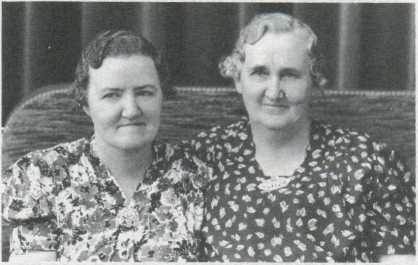and traveled about speaking to church and civic groups. On her return to Zululand, she worked at Hlabisa Hospital, a large facility with 2 mission doctors, 4 missionary nurse/midwives and a nurses training program. She was Director of Nurses and taught midwifery classes.
Most of her second furlough was spent writing a book Back of Beyond - Bush Nurse in South Africa, at the request of the mission director, Dr. Rolf Syrdal. She finished the book and sailed for Africa in 1961. Augsburg published the book in 1963.
In 1964, June resigned from the mission and returned to the United States. She began work in pediatrics at LaCrosse Lutheran Hospital in 1965. She took a leave of absence to study at the University of Wisconsin, Madison, getting her BSN in 1972. She returned to Lutheran Hospital as Director of Dept, of Education. She retired from that position in Dec 1985.
June was president of the local nursing association and helped establish a regional inservice educators group. She was an active member of St. Paul's Lutheran Church. Her special interests were global missions and social issues. June helped organize the local Lutheran Church Library group and was on the board of the YWCA for 6 years. She was active in the anti-apartheid movement for years.
In 1986 she was chosen to be Woman to Woman visitor to Namibia representing women of the ALC. She spent a month in Namibia before visiting friends and places where she had worked in South Africa.
In retirement June volunteers in church and community projects that focus on justice, peace and women’s issues. She was a leader in founding the local Habitat for Humanity. She is also active in Bread for the World, League of Women Voters, Church Women United and transitional housing for women involved in domestic violence.
June received the first LaCrosse Nurses’ Association recognition award in 1986, the Iverson/Freking Ecumenical award in 1990 and the Sis Hutson Volunteer of the Year award from the YWCA in 1992. In 1994, June spent 7 weeks in South Africa and Namibia, just after the first multi-racial election in South Africa where blacks gained their liberation. It was a joyful journey. June continues to live in LaCrosse where she is known for her activist work.
Kjome, Mabel Amanda
(Mildred Kjome)
There have always been a number of unmarried women who have made their contribution to our society without fanfare. Mabel Kjome is one of these. Mabel was born 21 Jan 1893 to Andrew and Clausine Kjome. She was their fourth born. As fate would have its way, Mabel’s was sealed already before her 4th birthday. Andrew made a note in the family Bible, "Mabel was paralyzed 3 Dec 1897". What had happened? The child had dropped a tiny bead in her ear which wouldn’t come out on its own. The doctor was called, and in his ignorance punctured her eardrum, causing immediate damage and paralysis to the left side of her body. Andrew was of course devastated.
Mabel was a determined little girl. She went to the Kjome School and was educated as far as the eighth grade. She was confirmed by Pastor Seehuus at the Highland Church in 1908. She performed household duties like the other children in the family, in spite of the lame arm, and she learned to sew. When the family moved to town there were new things to experience. The family took in students so the home was always filled with young people. The constant comings and goings of the family provided endless entertainment, but also more work. There was a bounteous assortment of cousins now living in the city. She also took part in the social life of the Lutheran Ladies Aide with her mother.

Mabel Kjome and her mother, Clausine Kjome.
When her father passed away, she and her mother moved into an apartment downtown. They could watch the hustle and bustle of the city from their window. Then her mother also passed away and Mabel began to make the rounds to stay with her married sisters. She went to Austin for a while to the Bjorgos, then returned to Decorah and stayed for a time with the Symonds family.
An accident would again determine her fate. She fell in the stairway and broke her hip. Now it was impossible for her to remain in the care of her family. She was sent to the County Home at Freeport. Confined to a wheelchair, she was limited to the area of the upstairs ward. Her family came often to see her, and supplied her with handiwork projects. She became especially accomplished at cross stitch. She kept up a correspondence with old friends and relatives from the Highland Church.
At age 65 she could no longer stay there and was moved to the Novotny Nursing Home in town. This was not a happy move for her. The rooms were crowded and dark and most of the people there were kept in bed. Depression overcame her and she refused to eat. When it became apparent that she had lost spirit, she was taken to the hospital, where she regained her health and good humor. But the idea of returning to the Home soon put her back in a depression.
The family rallied, and a room was arranged for her at the new Aase Haugen Home. This was to be her home for the remainder of her life. For the first time in many
K-19
Complete OCR transcription.
See the associated scan to compare with the published information.

